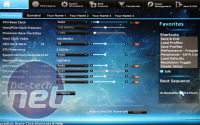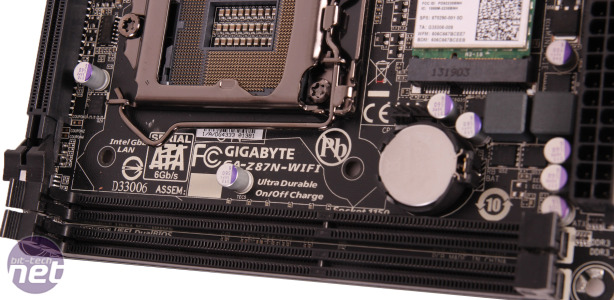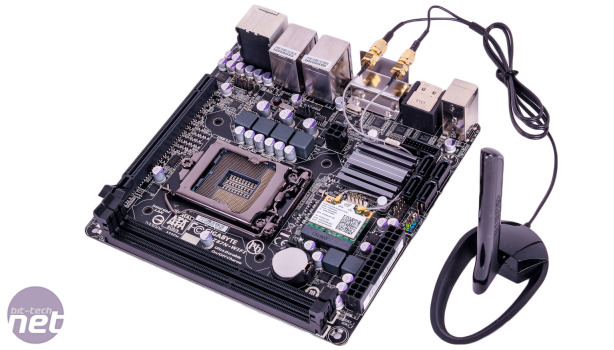Overclocking
The GA-Z87N-WiFi's Z77 predecessor was let down by one small flaw when it came to overclocking, which was that it lacked vcore adjustment. Thankfully, it didn't render it totally useless when it came to dealing with K-series Ivy Bridge CPUs, and most systems we've seen that used it still managed at least 4.4GHz. However, there's no such limitation with the GA-Z87N-WiFi so it looks set to be much more overclocking-friendly.Click to enlarge
The EFI comes in two parts - a classic mode that harks back to the early EFIs and new flashy graphics-laiden one that you can toggle-between using F2. However, the latter proved to be noticeably laggy and the slider bars used to adjust the various settings weren't very easy to work with. As we suspected, the lack of extensive VRM circuitry resulted in some fairly high temperatures at our default run-in settings of 4.7GHz and 1.27 V. As such, we had to continually drop back the voltage and eventually the frequency to get things stable under load. The end result of 4.6GHz at 1.2V is fairly average for the Z87 boards we've seen so far but still on par with the Asus Z87i-Pro.
Performance
The results in the Media Benchmark suit were poor at stock speed, where the GA-Z87N-WiFi came bottom in every test and trailed the second from last motherboard by 20 points overall. In games, things picked up a little where it managed mid-table results in The Elder Scrolls: Skyrim and Total War: Shogun 2 but the SATA 6Gbps ports were again slower than the competition and were around 10MB/sec slower than those on the Asus Z87i-Pro.
Click to enlarge
With a healthy overclock to 4.6Ghz, the GA-Z87N-WiFi came back in line with the competition but its overall score in the Media Benchmarks was still a tad slower than the other boards on test. The Elder Scrolls: Skyrim benchmark also pitched it way down the list of overclocked results but mostly it was an average rather than poor showing once we'd applied our settings in the EFI. While power consumption isn't likely to be something that will bother full-size enthusiast motherboard owners, it is perhaps a little more relevant here and the GA-Z87N-WiFi was usually between 10-20W less power hungry than the Asus Z87i-Pro in our tests, all except the overclocked load test, where it drew an additional 7W.
Click to enlarge
Conclusion
While the GA-Z87N-WiFi didn't put in a fantastic performance in our benchmarks, this is far from a deal breaker. It was never miles behind and its low price arguably makes up for this when compared to the the Asus Z87i-Pro, which is more expensive and didn't overclock any further. However it's the layout issues, fairly sparse feature-set and mediocre EFI that let it down.
That said, for the money this is still a reasonable mini-ITX motherboard, that will likely push your CPU cooler to its limits with a K-series CPU, which for some will probably be all you need. While the EFI isn't a great place to be for any length of time, it was fairly easy to reach 4.6GHz and then you'll never have to visit it again. However, it's MSI's effort that we're currently best-pleased with, as we mentioned in our recent buyer's guide and we'll have a review of that very soon.
-
Speed41 / 45
-
Features18 / 30
-
Value21 / 25


MSI MPG Velox 100R Chassis Review
October 14 2021 | 15:04














Want to comment? Please log in.